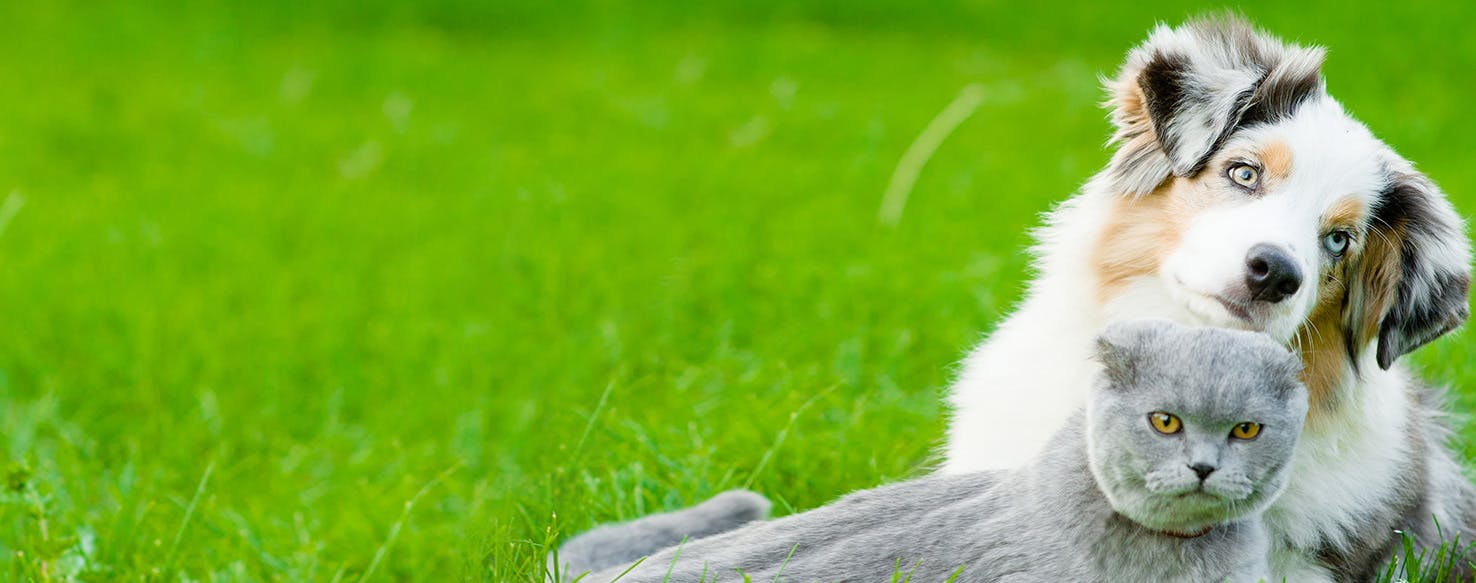- Home
- The Daily Wag!
- Behavior
- Why Do Dogs Attack Other Animals
Why Do Dogs Attack Other Animals

Common
Irregular
Introduction
You LOVE your dog. She is pretty, she is sweet, and she is generally well behaved. Sure, she gets a little rambunctious around dinner time, and she seems to take great joy in “loving up” against people, especially people who are well dressed. For instance, people at church wouldn’t recognize you without enough dog fur on your clothes to weave a rug. Also, there’s that weird thing she does when encountering another animal’s poop. But, in spite of - or maybe because of - her many faults, she is utterly lovable. Except for the time she killed a squirrel in front of the neighbor’s grandchild.
The Root of the Behavior
It’s easy to forget that your dog comes from the wolf; the vicious, blood-thirsty wolf who is a consummate hunter. Remember that commercial dog food is actually a new phenomenon. Wolves started to hang out with us, and slowly changed into dogs because we made it easier to catch prey and to scavenge our leftovers, not out of any deep love or understanding (that came later). In the beginning, wolves hung out with us because we gave them a leg up in hunting.
We can still see the hunter in our dogs. We can see it in the Rottweiler’s powerful jaws and the Terrier’s unrelenting determination. And we can see it in the way that our dogs play. Who hasn’t known a dog that liked to use tooth and claw to remove a toy’s squeaker? When we throw a toy to a dog, she will often grasp it between her jaws and shake it violently, mimicking the way she would shake the life out of a vole or a squirrel. Our dogs are cuddly, lovable killers.
The urge to hunt is properly known as the “prey drive”, and all dogs have it, though, in some, it’s more prominent than others. During the domestication of the dog, people used the prey drive to their benefit. It is the prey drive that pushes dogs to do things like race, to herd sheep, and to find and kill vermin. But even in trained dogs, the prey drive can lead them astray. In fact, it’s the same prey drive that people use and twist to force dogs to fight each other for human amusement. But even if a dog isn’t twisted into fighting, a dog answering her prey drive is not only a danger to people and animals around her, but to herself as well. A dog consumed by her prey drive will run into traffic, she will trip her handler up in an effort to get at her prey, she will run herself into deep weeds and water, and she may very well get lost. When the prey drive kicks in, your dog essentially loses her mind.
Need advice about your pet's health?
Get answers fast from a veterinary professional 24/7 in the Wag! App.
Get Vet ChatEncouraging the Behavior
The prey drive is a natural part of your dog’s subconscious mind, but not every dog gives in to it. While everyone has heard of dogs that attack other animals, there are also a lot of dogs who live peacefully with other animals, and who don’t drag their human into traffic in a vain attempt to catch a squirrel. The big difference is self-control. The prey drive is an integral part of a dog’s character, but it is possible to shape your dog’s behavior toward less chaotic pursuits. All dogs need to know how to walk on a leash as well as to come when called and to obey commands such as “drop it.” In a dog with a very strong prey drive, training becomes extremely important. Games such as fetch, tug of war, and the "come back" game are fun and effective ways to help your dog develop her self-control. Lots of treats, lots of praise, and a long leash can be invaluable when it comes to effectively training. You can also use distractions such as toys and treats to distract your dog when you see her begin to lock in to potential prey. Ultimately, training, play, and simply paying attention to your dog’s attitude when she is around temptations will not only help you avoid disaster,but will strengthen the bond between you.
Other Solutions and Considerations
When your dog has a particularly strong prey drive, it becomes more important that you keep control of her. She should not be allowed off leash unless she is in a securely fenced area. She should also be watched when she is around other animals, even ones she is familiar with. A dog with a strong prey drive, if she is sufficiently excited, may chase or even attack a smaller pet. For that matter, if you have a smaller animal in your home, such as a kitten or a cat, you should make sure he has an escape path to escape the over-enthusiastic attention of your dog.
Conclusion
A dog’s prey drive is the legacy of her ancestors. In the modern day, it can be inconvenient or even disastrous. However, if you are patient, you can help your dog control and re-direct her prey drive. The time you spend with your dog can be fun for both of you.
Written by a Chow Chow lover Jodi Mai
Veterinary reviewed by:
Published: 03/16/2018, edited: 01/30/2020
More articles by Jodi Mai
